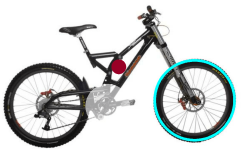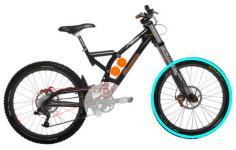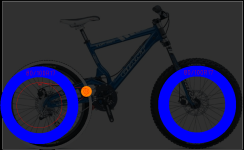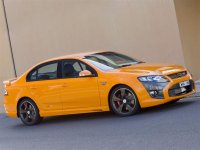Stielz
100 W
Just in the planning stages of my next project.
Im going for a high torque machine rather than outright speed, I want something that can go up really steep tracks and stairs, pull continuous power wheelies right up to 50km/h, all the good stuff like that.
Im thinking I will most likely use an RC motor because of their high power density - small and lightweight compared to hub motors.
After many many hours of browsing this forum I have been inspired by many builds - to name a few:
Ratkings downhill/freeride bike http://endless-sphere.com/forums/viewtopic.php?f=28&t=22692
Timma2500's build http://endless-sphere.com/forums/viewtopic.php?f=28&t=45438
panurge's build http://endless-sphere.com/forums/viewtopic.php?f=28&t=25101&start=50
dustyearlobe's dual cyclone build http://endless-sphere.com/forums/viewtopic.php?f=28&t=42580
recumpence's sick dual astro build http://endless-sphere.com/forums/viewtopic.php?f=28&t=9534
and of corse liveforphysics' twin C80100 http://endless-sphere.com/forums/viewtopic.php?f=28&t=8347
Also i should mention that I am building an EV motor controller as part of a masters project, Im a optimist and am hoping that in about a year or so I might have made a controller that can handle these hard to drive RC motors.
Im currently just keeping an eye out for second hand bikes that will fit my criteria for this build.
Something ive been working on in the meantime is putting together a spreadsheet of potential motors for the project. Ive been scouring the internet for specifications of some suitable RC motors and adding to the spreadsheet all information I find like Kv constant, current, voltage, power rating, phase resistance, inductance, no load current, weight, size, etc. I can then enter things like batt voltage, wheel diameter, gear ratio. The spreadsheet performs a bunch of calculations and gives estimated maximum wheel torque and speed. I think this will be a very useful tool in designing for this build.
I will make this spreadsheet public when its a bit more complete, I still have alot of missing information at the moment.
Just wondering, does any such spreadsheet exist already? Any input will be appreciated, I know some people have done testing on motors to find out this information.
It would be nice if we can create some master spread sheet so we can get a full list of specs of all the motors that people on this forum like to use. I know how frustrating it is when the sellers of the motors dont give you all information about the motor.
Im going for a high torque machine rather than outright speed, I want something that can go up really steep tracks and stairs, pull continuous power wheelies right up to 50km/h, all the good stuff like that.
Im thinking I will most likely use an RC motor because of their high power density - small and lightweight compared to hub motors.
After many many hours of browsing this forum I have been inspired by many builds - to name a few:
Ratkings downhill/freeride bike http://endless-sphere.com/forums/viewtopic.php?f=28&t=22692
Timma2500's build http://endless-sphere.com/forums/viewtopic.php?f=28&t=45438
panurge's build http://endless-sphere.com/forums/viewtopic.php?f=28&t=25101&start=50
dustyearlobe's dual cyclone build http://endless-sphere.com/forums/viewtopic.php?f=28&t=42580
recumpence's sick dual astro build http://endless-sphere.com/forums/viewtopic.php?f=28&t=9534
and of corse liveforphysics' twin C80100 http://endless-sphere.com/forums/viewtopic.php?f=28&t=8347
Also i should mention that I am building an EV motor controller as part of a masters project, Im a optimist and am hoping that in about a year or so I might have made a controller that can handle these hard to drive RC motors.
Im currently just keeping an eye out for second hand bikes that will fit my criteria for this build.
Something ive been working on in the meantime is putting together a spreadsheet of potential motors for the project. Ive been scouring the internet for specifications of some suitable RC motors and adding to the spreadsheet all information I find like Kv constant, current, voltage, power rating, phase resistance, inductance, no load current, weight, size, etc. I can then enter things like batt voltage, wheel diameter, gear ratio. The spreadsheet performs a bunch of calculations and gives estimated maximum wheel torque and speed. I think this will be a very useful tool in designing for this build.
I will make this spreadsheet public when its a bit more complete, I still have alot of missing information at the moment.
Just wondering, does any such spreadsheet exist already? Any input will be appreciated, I know some people have done testing on motors to find out this information.
It would be nice if we can create some master spread sheet so we can get a full list of specs of all the motors that people on this forum like to use. I know how frustrating it is when the sellers of the motors dont give you all information about the motor.





